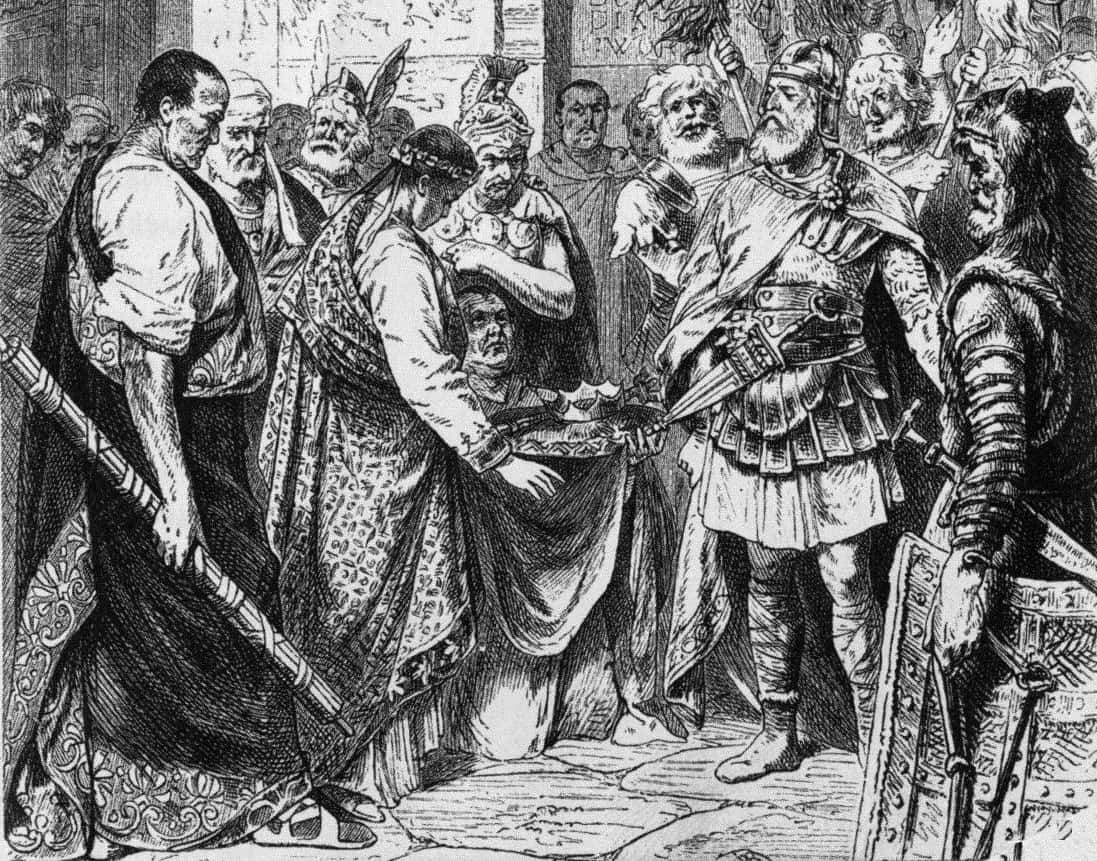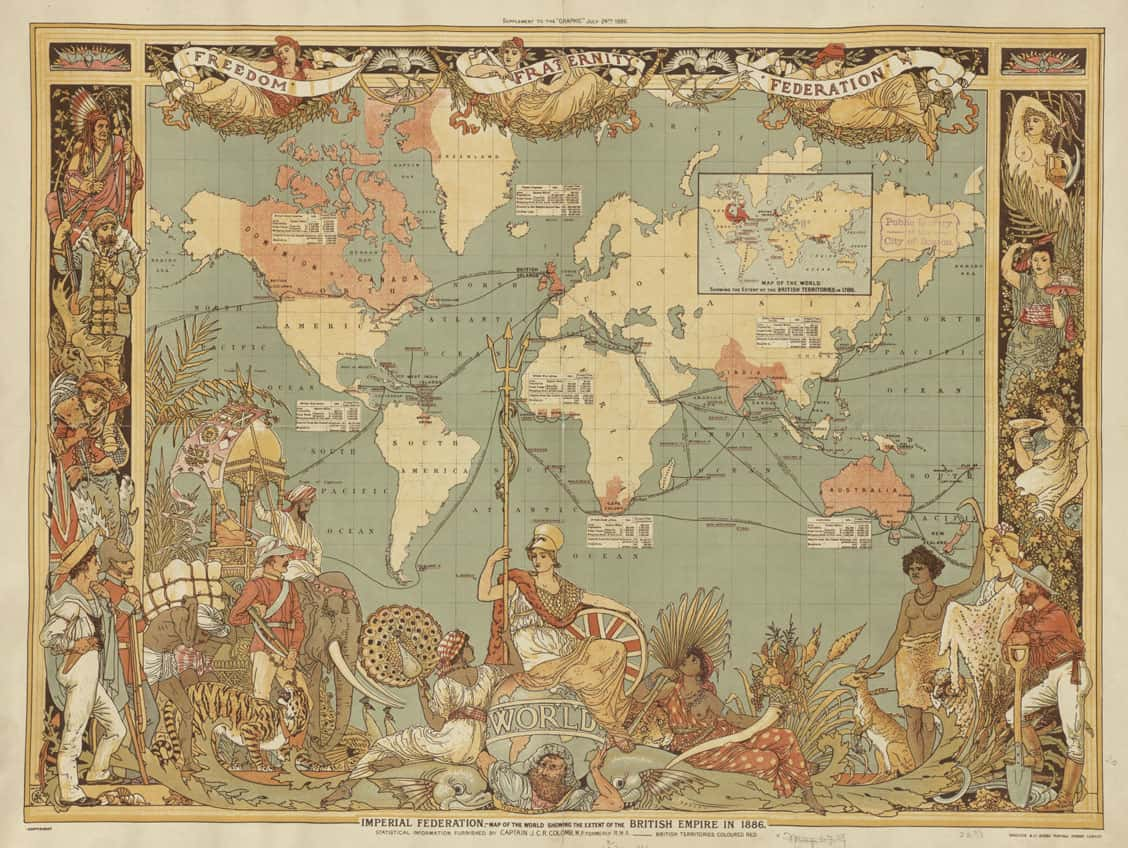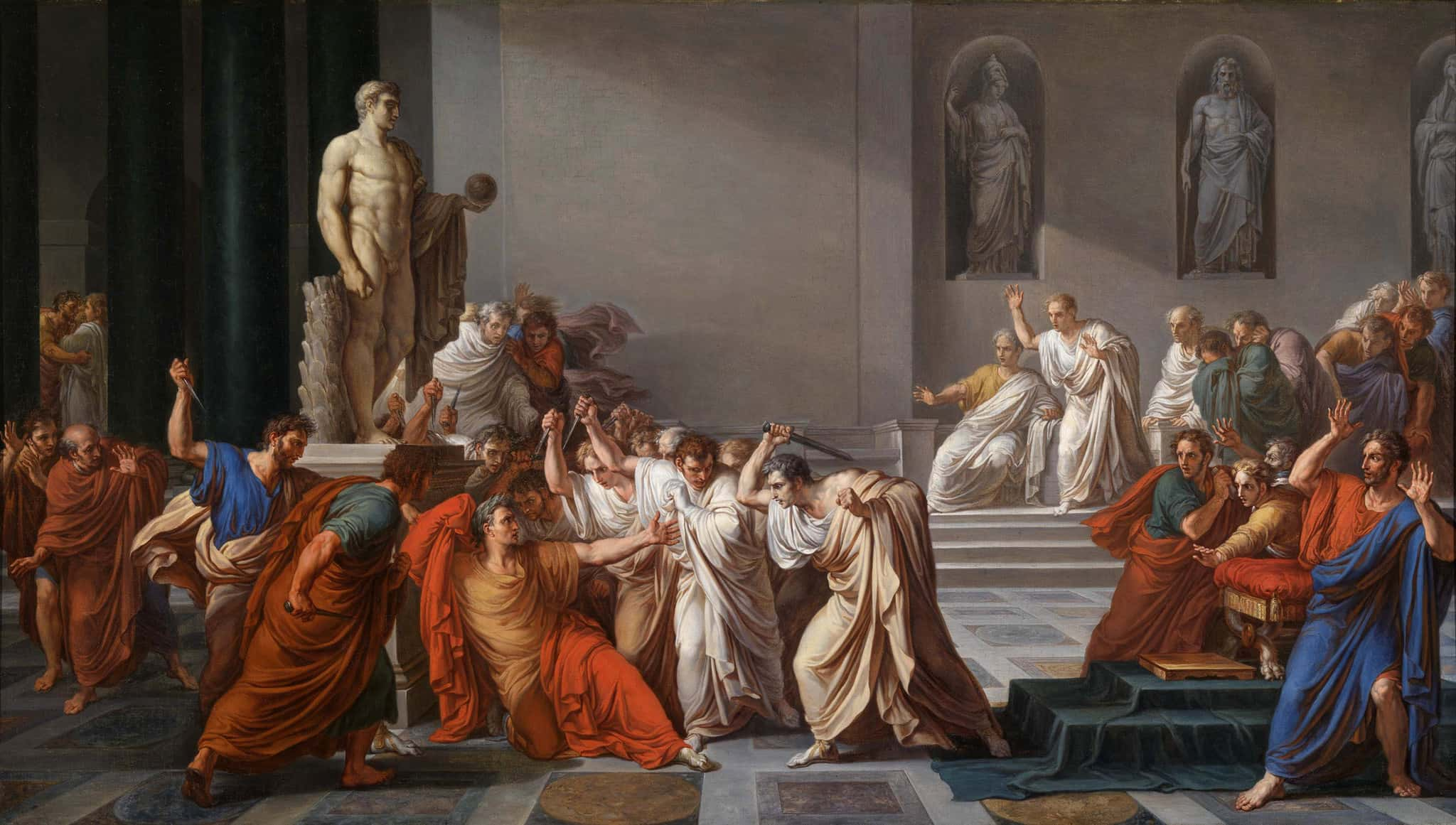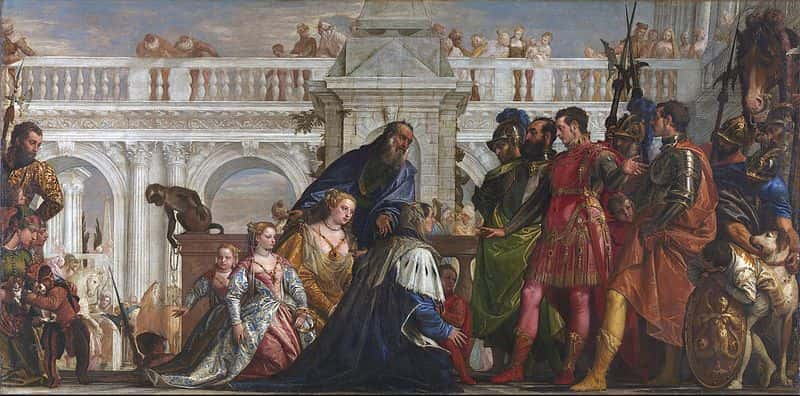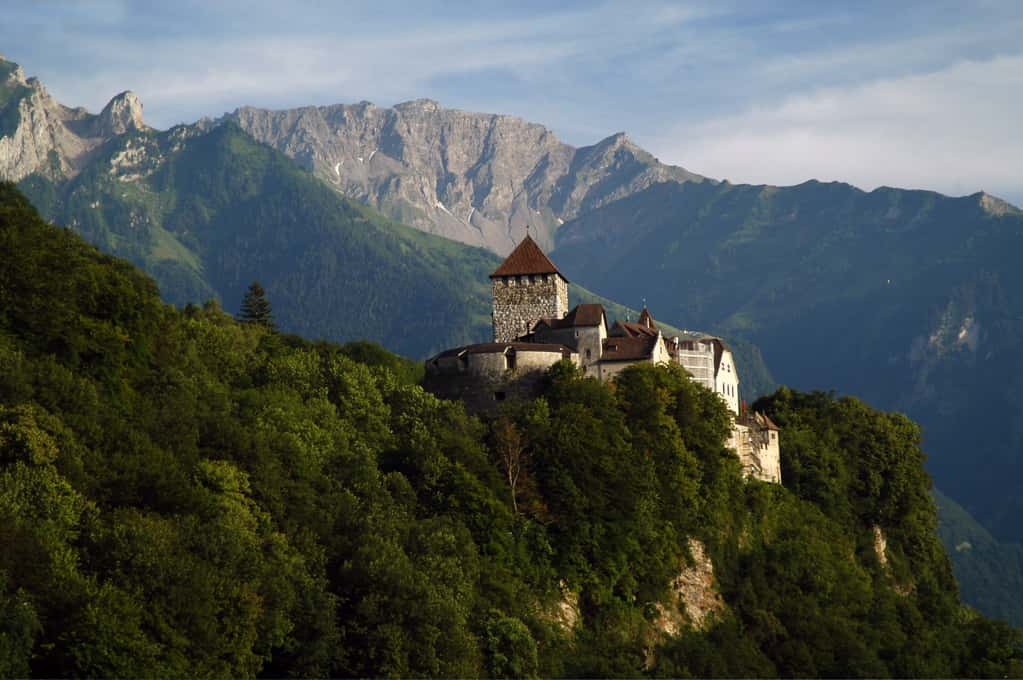Empires come and go, but some do it in spectacular fashion. We’ve all heard about the Ides of March and the self-destruction of the Roman Empire. Other empires, though, have had much different falls from grace. From infighting to assassinations, no matter the cause, there is always an interesting story when a great dynasty collapses.
Fall Of Empires Facts
1. Barbarous Acts
The fifth century was not kind to the city of Rome. Many cite 476 as the year that Rome completely fell. Emperor Romulus Augustulus ruled the Italian city when Odoacer, leader of the Germanic “barbarians,” sacked the city for the third and final time. After enemy forces gave Romulus Augustulus the boot, no other emperor ever ruled Rome.
2. Lil’ Augustus
Due to his inability to stave off the barbarian hoards from dealing the deathblow to the Roman Empire, Emperor Flavius Romulus Augustus received the nickname Romulus Augustulus. The –ulus suffix in Latin creates a diminutive form. In other words, you can just call him “Little Augustus.” Some also changed the name Romulus to Momylius, which means “little disgrace.” Ouch!
3. Setting Sun?
The old adage, “the sun never sets on the British Empire,”refers to the height of Britain’s territorial rule across the globe. When Britain relinquished its hold on Hong Kong in 1997, many modified the phrase to signal the end of the once global empire. It looked the sun had finally set, but technically speaking, the adage still holds true. Since Britain holds territory on islands such as the Falklands, St. Helena, Tristan da Cunha, and the Pitcairn Islands, sunlight is always touching at least some part of British territory.
4. Take Me to Your Leader
The late Roman Empire really struggled to maintain a solid, steady government. With such a vast empire, a lot of people vied for power. During 75 years of civil war, over 20 men claimed the throne as Roman emperor. Part of the reason for this conveyor belt of emperors was that the Praetorian Guard, the personal bodyguards of the emperor, had a tendency to off anyone they didn’t like. Most of the more than 20 emperors in this time span were assassinated.
5. Rule Breakers
Beware the Ides of March! When Julius Caesar installed himself as dictator of Rome, he was bound to make a few enemies in the senate. Well, it turned out to be more than a few. Some of Caesar’s more strict rulings and laws did not go down well with the likes of Tillius Cimber, Casca, and Marcus Brutus (yes, him too). In 44 BC, at a senate meeting, Caesar was assassinated by way of 23 stab wounds. Although the Roman Empire continued for another five centuries, many historians view this cataclysmic event as the beginning of the end.
6. Famous Last Words?
Everyone knows Julius Caesar's poetic final words: “Et tu, Brute?” (“And you, Brutus?”). The line signals the ultimate betrayal of a powerful man by his former friends and allies. However, the line is famous because of Shakespeare’s play Julius Caesar. In reality, Caesar likely said no such thing. One Greek historian reported that Caesar’s last words were “Kai su, teknon?” (“You too, child?”). But other Greek historians such as Plutarch suggest that Caesar kept it minimal: As his old friends closed in, he said nothing at all.
7. Out with the Old, In with the New
In the 17th and 18th centuries, the Ottoman Empire was a constant threat to Europe's eastern borders and kept laying siege to Vienna in particular. But by the end of WWI, the Empire was falling apart and could not contend with the military strength of the Allied forces. Instead of falling into the hands of other empires, Kemal Atatürk went a different route. He proclaimed the Ottoman Empire dead and began a new wave of Turkish nationalism.
8. Give It Back
Constantinople, now known as Istanbul, has had an amazing history. It changed hands from Christian and Muslim empires a number of times before Mehmed II finally took it away from the Byzantine Empire in 1451. Get ready to feel like an under-achiever: At the time, Mehmed was just 22 years old.
9. Repelling Invaders
The last Emperor of the great Abyssinian Empire, Haile Selassie, was a tactical genius. The Ethiopian empire is famous for destroying multiple major European armies. Until, at least, Italy entered the arena. They defeated Ethiopia at the onset of WW2, in part thanks to the use of mustard gas. Selassie returned to Ethiopia in 1941 and led the armed resistance against the Italian empire, eventually defeating his enemies in 1941.

History's most fascinating stories and darkest secrets, delivered to your inbox daily.
10. A Revolutionary End
The Abyssinian Empire fell in 1974, not from the invasion of another empire, but from a revolution within. With the Cold War at its peak, the “Derg” (also known as the Provisional Military Government of Socialist Ethiopia), performed a coup d’etat against Haile Selassie. The Derg implemented Communist ideology with sweeping land reforms and abolished feudalism, which brought an end to the Ethiopian Empire.
11. Mysterious Causes
Haile Selassie, the last emperor of Ethiopia, breathed his last in prison, only his death to become shrouded in mystery. The official report stated that he passing during an operation on his prostate. The only problem with that report? Selassie’s doctor claimed no such procedure ever took place. The working theory is that the new Communist government had Selassie offed. To this day the cause of his demise still isn’t clear.
12. The Sacred River Alph
The Mongol Empire grew to be one of the largest in world history, so it was only a matter of time before factions squabbled within the territories. Enter: Kublai Khan. He was one of the last great rulers the Mongol Empire but his tendency to play favorites sowed the seeds for collapse. Khan was infatuated with Chinese culture and even created the Yuan Dynasty. When Khan died in 1294, the Yuan dynasty started looking to gain power over the western side of the empire.
 Wikimedia Commons, A. Omer Karamollaoglu
Wikimedia Commons, A. Omer Karamollaoglu
13. Let’s Make a Deal
After years of civil war throughout the Mongolia Empire, the four major “khanates” decided to seal their differences under the Pax Mongolica. The agreement put an end to the Mongol Empire as it once was. Such was the importance of maintaining the Silk Road trading route that even Pope John XXII kept close tabs on the negotiation of the Pax Mongolica. He later praised the rulers as some of the greatest monarchs ever.
14. Down with the Sickness
Although the four khanates of the Pax Mongolica were already beginning to fight with each other, the final nail in the coffin of the Mongol Empire was the Black Death. In the fourteenth century, almost one third of China’s population died of the Bubonic plague.
15. Into the Woods
In the early hours of July 17, 1918, Yakov Yurovsky and a few of his soldiers led the Romanov family into a basement. Once there, they opened fire and brutally executed the entire family. Nicholas II was the last Tsar of the Russian Empire after the Bolshevik Revolution deposed the monarchy in 1917. At first Vladimir Lenin only made the death of Nicholas public, fearing that the execution of the entire family including the children would look bad.
16. The One That Got Away
After the execution of the Romanovs, a great mystery surrounded one of the children: Anastasia. Rumors claimed that she had some escaped from her captors. A number of pretenders even claimed to be the exiled duchess. Women such as Anna Anderson insisted they were the runaway Anastasia in an effort to access to the Romanov fortune. However, all this speculation ended when Anastasia’s remains were found in 1991.
17. Ra-Ra-Rasputin
For some, one man embodied the end of the Russian Empire: Grigori Rasputin. The eccentric Russian mystic proclaimed himself a holy-man and gained favor with the Tsarist court because he claimed he could help heal the hemophiliac son of Nicholas and Alexandra, Alexei. Alexandra was particularly fond of the mystic and when Nicholas went to St. Petersburg in 1915 to help oversee the war efforts, Rasputin used the opportunity to gain influence in the Tsarist household. Across Russia, people started losing faith in Nicholas’ abilities—partly because of the events of World War I and partly because of Rasputin's growing influence.
18. Shadow Plots
Rasputin’s sway over Alexandra grew so powerful in 1915 and 1916 that he began to make the other nobles nervous. Prince Felix Yusupov and the Grand Duke Dmitri Pavlovich decided that enough was enough in December 1916. Yusupov invited Rasputin to his palace where he served the mystic cyanide-laced cakes and wine. But the poison didn’t work! Yusupov had to shoot Rasputin multiple times before the mystic finally perished.
19. Lover’s Quarrel
Mehmed II, the man who conquered Constantinople and brought about the fall of the Byzantine Empire, was also known as a lover with diverse tastes. He had five wives with whom he had four children, but he also took a number of lovers during his reign. Contemporary accounts suggest he was fond of young men and took the Prince of Wallachia, Radu cel Frumos, as one of his lovers.
20. Arsenic and the Old Lace
The Qing dynasty came to an end in 1912 when the child emperor Puyi abdicated from the throne. Prior to Puyi, the last great emperor was the Guangxu Emperor who died under mystery circumstances. Reports at the time suggested that either the empress Dowager Cixi or the military general Yuan Shikai ordered for the Emperor to be poisoned. Nearly a century later an autopsy revealed that the Emperor had indeed been poisoned with a lethal amount of arsenic.
21. Garden Parties
Interested in making China a prosperous global player, Empress Dowager Cixi implemented sweeping political and social reforms. She began hosting elaborate garden parties at the Summer Palace with diplomats from Europe and the United States. These reforms were not always taken lightly and in many ways, they signalled the end of the Qing Dynasty.
22. With Open Arms
Hernán Cortés and his band of Spanish Conquistadors infamously sacked Tenochtitlan, which led to the fall of the
Aztec Empire. Ironically, when they first arrived at the city, they were greeted as friends. The Motecuhzoma welcomed the Spanish forces, but things turned sour two weeks later, when Cortés ordered his men to apprehend the Aztec leader and place him under house arrest.
23. Bright Lights, Big City
At the time of its sacking by Cortés and the Spanish, the Aztec capital city of Tenochtitlan was a sight to behold. With a population of around 200,000, the city boasted an impressive array of advanced architecture. Massive temples, meticulously crafted gardens, and man-made artificial lakes dotted the city.
24. Bearing Gifts
When news of encroaching Spanish forces reached the Aztec King Motecuhzoma, he decided to go with the diplomatic approach. He already knew that the Spanish had far more advanced weaponry than Aztec forces, so he sent gifts of a gold and silver discs as well as ceremonial masks and clothing. Unfortunately, these gifts only whetted Cortés’ appetite.
25. Breaking the Rules
After Motecuhzoma sent gifts to the Spanish Conquistadors, Charles V ordered Cortés and his men to return to Cuba. But Cortés refused and burned his ships, telling his men that it was either conquest or death. They then marched on the Aztec heartland and began to destroy the once massive empire.
26. Local Allies
Cortés and the Spanish Conquistadors didn't overthrow the Aztec Empire alone. They got help from smaller tribes that the Aztecs had conquered. Key amongst these allies were the Tlaxcalans, who had a big axe to grind with the Aztecs, seeing as how they'd been enslaved by them. Because of this, they were more than willing to assist in their downfall.
27. Your Shadow Weighs a Tonne
Ramesses III was the last true great ruler of the New Kingdom of the Egyptian Empire. Under his reign, the empire grew nearly double in size. But his greatness didn't get passed down to his three sons. Each was weaker than the next. The last of the heirs, Rameses VIII, was barely more than a stand-in. By that time, difference religious sects ruled the empire's Northern and Southern regions.
28. Biting Off More Than He Could Chew
To be fair, Rameses III’s heirs didn't exactly have an easy time. Their father was a force to be reckoned with, but his many conflicts also had downsides. Rameses III attacked Libya so often that he stretched Egypt's armies thin. By the time of his demise, there weren't even enough resources left to feed the architects and builders of the royal tombs!
29. Too Big to Fail
Carthage was the up and coming empire at a time when the Romans seemed to be at their peak. Thanks in large part to their general Hannibal Barca, the Carthaginians gained a foothold across the Mediterranean. Hannibal really wanted to go for the throat of Rome and tried on more than one occasion to march on the heart of the Roman Empire. He was never successful and, what’s worse, he drew the attentions of the Romans. They eventually sacked Carthage and brought an end to their empire.
30. Elephant in the Room
Part of the reason that Carthage was left in a bad way after Hannibal’s death was due to the General’s lavish spending on war campaigns. He was a great military leader but some of his ideas did not pan out. During the Second Punic War, he tried to command an army across the Italian Alps so that he could march on Rome. Obviously not considering that not all animals are worthy of such great heights, part of his army included a small legion of elephants. All except for one elephant died on the journey. Sad, but also, give me a biopic about that one badass elephant.
31. Stay Off My Property
Skandagupta, the last great ruler of the Gupta Empire, located in what is now India, was quite the military commander. During his reign, he had to fight off not one but two invading forces. First the Pushyamitras and then the Hunas (AKA the White Huns). With his military prowess and leadership, Skandagupta repelled both invasions. Unfortunately, the financial and resource cost of this success was so great that the Gupta reign never really recovered. After running the Empire into the ground, no future ruler could reverse the decline that started after Skandagupta's costly campaigns.
32. One Man Army
Empires are generally considered to be vast and complex systems, but sometimes it really comes down to the charisma of a single ruler. Such was the case with the North Sea Empire, an Anglo-Scandinavian Empire that lasted from 1016-1035 AD. Cnut the Great ruled during this time, but after he and all of his heirs died, the Empire quickly dismantled.
33. Depends Who You Ask
After the Norman Conquest of England in 1066, the legend of Cnut the Great becomes somewhat murky. In the original legend, he was a fair and wise ruler who rebuked suck-ups. But after the Norman’s ousted the Scandinavians from England, the legend became a bit different. Cnut was quickly depicted as delusional king who felt he possessed supernatural capabilities. It’s pretty impossible to tell which one is closer to the truth.
34. Not His Father’s Son
After Cnut’s death, the fate of the North Sea Empire lay at the feet of the late king’s son, Harthacnut. Now crowned King of England, Denmark, and Norway, Harthacnut made a real hash of things. First he lost Norway to Magnus I, then he spent too much time in England and lost the favor of the English court, and then he just up and died during a wedding in Lambeth. He had gotten a bit drunk at the wedding and fell dead while standing to give a toast. In all likelihood, he passed of a stroke. With his end, any possibility of continuing the North Sea Empire ended too.
35. Poisonous Liaisons
As if the looming approach of Alexander the Great wasn't enough cause for concern, the Achaemenidian Empire of Persia also had to contend with insubordination. Even before the Alexander could march on Persepolis, the state vizier Bagoas had been killing of emperors left, right, and center. One of the last great emperors of the Persian empire, Artaxerxes III, was poisoned by his once right-hand man. Bagoas then poisoned Artaxerxes’ son who was the rightful heir to the throne.
36. Just Desserts
After Bagoas assassinated the two Artaxerxes emperors, he went about installing his own preferred ruler for the Persian Empire, Darius III. What Bagoas probably didn’t expect was that Darius had revenge on his mind. In an eye-for-an-eye move, Darius III forced Bagoas to ingest poison. Sweet though the irony might have been, it really signalled the fact that the Achaemenidian Empire was in total disarray.
37. That’ll Slow Them Down
In one last bid to thwart the advancing Greek armies, Bessus, a brother to Darius III, killed his brother and claimed to be the proper ruler of the Achaemenidian Empire. Given the turbulent years before this move, it all amounted to a bit of a desperate grab for power. Bessus fled Persepolis immediately after offing his brother and even laid his body in the street to slow Alexander the Great Down. Alexander brought the body of Darius back to the former Persian capital and gave the former king a proper burial.
38. Defending the Title
Alexander the Great recognized the instability that came with the fall of Empires and decided that he did not want turmoil in the region of Achaemenidian Empire. So when he took power, he essentially maintained the same structure as before but sent out troops to capture the traitor Bessus. Alexander had Bessus publicly executed for his treasonous crimes. In turn, Alexander is sometimes called the “last of the Achaemenidians.”
39. Last Vestiges
The Holy Roman Empire was once a vast network of smaller principalities across Central Europe. While Napoleon changed all that, some of the old Empire still remains in present day Europe. The magnificent Principality of Lichtenstein, nestled in a valley between Austria, Switzerland, and Italy, is the last remnant of the once mighty empire.
40. If I Can’t have It, no one Can!
The fall of the Holy Roman Empire was mainly due to the conquests of Napoleon and France in the early nineteenth-century. But officially it was all the doing of Francis II. As French troops got closer to Austria, Francis decided to abdicate his title as Holy Roman Emperor and declare the Empire was over. The move was political and meant to delegitimize Napoleon’s attempt to make a unified Confederation of the Rhine. Still, to have thousands of years of history go up in smoke in a single summer day was quite the shock!
41. Taking Control
After Antony and Cleopatra failed to conquer Rome, they returned to Egypt pretending as if they were successful. Unfortunately Octavian was hot on their heels. It quickly became obvious that Cleopatra’s Egyptian kingdom was about to become a part of the rising Roman Empire. To escape the consequences of this defeat, Cleopatra ended her own life at the age of 39.
42. He’s Your Son!
In one last attempt to maintain some influence over her empire, Cleopatra named her son Caesarion as heir. Cleopatra had given birth to Caesarion after a secret and illicit affair with Caesar in Rome. Octavian was having none of it and in 31 BC, he travelled to Alexandria where he had Caesarion executed after just an 18 day rein.
Sources: 1, 2, 3, 4, 5, 6, 7, 8, 9, 10, 11, 12, 13, 14, 15, 16, 17, 18, 19, 20, 21, 22, 23, 24


